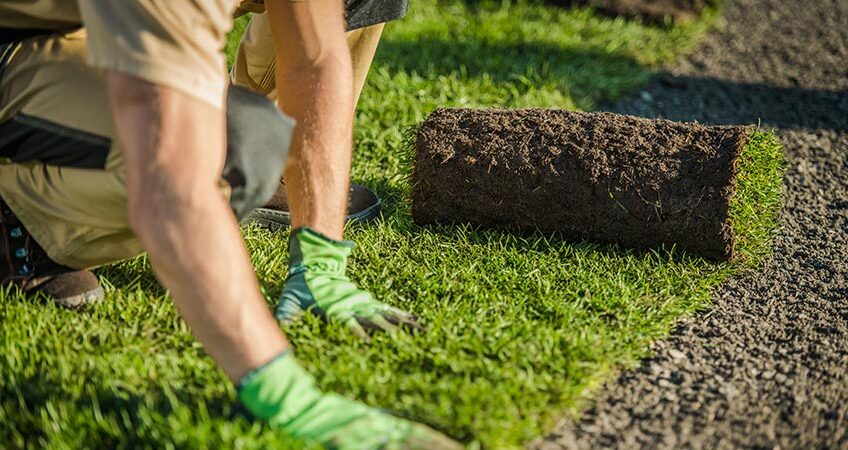You need to make sure that you treat your new lawn like a newly born baby – look after it! Feed it, water it, caress it, talk to it if you have to, but most of all do not neglect it. The first two to three weeks are the “critical phase” in the establishment of a new lawn from the turf. All too often, lawn owners have a new lawn laid then fail to look after it and then blame the company who supplied or laid the turf when problems develop a few weeks later. Follow these simple rules to ensure that your newly laid lawn gets a head start.
Soil Preparation
Taking the time to properly prepare the soil is a major factor in whether a sod lawn will turn out beautifully. The ideal foundation for sod will include aerated soil, compost, sand, fertilizer, and, in some cases lime.
The soil should be slightly acidic and nutrient-rich. Follow these easy steps to prepare the soil:
• Use a rototiller to loosen about 6 inches of dirt.
• Spread high-quality compost over the loosened dirt. The compost should be about 2 inches deep.
• Next, add a 2 to 3-inch layer of sand. The purpose of the sand is to improve drainage.
• One of the best bits of advice for those laying a sod lawn is this: Get the soil tested. DIY kits are available, but pay a few extra dollars and have the soil professionally tested.
• After performing the soil test, add fertilizer. Some will need to add lime depending on the results of the soil test.
Leveling the Ground
A very common mistake when laying sod is failing to level the ground. This can cause the lawn to look bumpy and uneven and can, in some cases, cause the seams to be easily visible creating a patchwork quilt effect.
Simply use a rake or similar tool to move the soil around enough to fill in the low spots and bring down the high spots. Once the ground is level, water sparingly and you’ll be ready to start laying the sod.
Laying the Sod
Anyone who has had a mishap when trying to lay tile knows this: How you start will have a huge impact on how the finished project looks. The same is true when laying sod.
•Identify the longest straight patch in your yard. This is where you will lay the first roll.
•For the first roll, use the entire length of the sod.
•Once it is down, you will need to remove air pockets by patting it down gently.
•You should avoid stepping on the new sod, but if you do, use a rake to remove any footprints.
•For the remaining row, you will need to cut each length of sod in half.
•Stagger the placement of the shorter seams of the sod. Think of a brick wall to get the idea of how this should look.
•Be sure the seams are nestled snugly together, but they should never overlap.
•Cut away at the sodas needed when placing around trees, flower beds, and other features.
Fertilize your new lawn
Within 4 weeks following laying the new lawn and then every two to three months thereafter. Every time you mow, you remove some of the nutrients so make sure that you give your new lawn a fighting chance by feeding it with a fertilizer only (no weed or moss killer) lawn product.
Keep an eye out for lawn disease
Despite the best will in the world, welcome to real grass and real grass problems. Your old lawn may have suffered from all sorts of lawn problems and ailments but the symptoms probably went unnoticed. If you notice any white/grey white mycelium like cotton wool on the new lawn, especially when the weather is warm and moist and muggy then you may have an attack of Fusarium Disease. If you notice pink mycelium on the lawn’s surface then you might have an attack of Red Thread Disease.
If You need help, Call Us or send a message.

